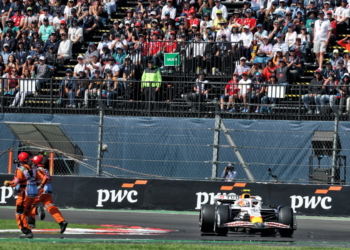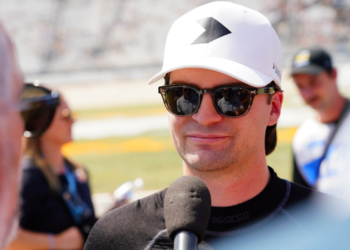Fernando Alonso’s Malaysian GP victory was the perfect tonic for Ferrari, but doesn’t disguise the fact they have a mountain to climb to mount a title challenge.
If they can become more competitive the 35 points Alonso has won so far could become critical later on in the season. This unexpected win will give a huge boost of morale to everyone in the team.
However the victory on Sunday owed much more to the sheer brilliance of the Spaniard and the conditions than it did the F2012. Plus Sauber threw away a golden chance of a race victory. The car is still a long way off the pace with plenty of issues to solve.
Alonso was able to compete for race victory as the talent of the drivers comes to the fore in wet conditions. The wet conditions remove some of the advantages enjoyed by the best cars, and on the same token the weaknesses of a bad car aren’t as much of a hindrance.
The two times world champion was able to demonstrate why he is considered the best driver in the sport. The series of laps he set once he was in the lead, to pull away from Sergio Perez, were absolutely mesmerising.
Great pit work and strategy is also essential in races where Mother Nature plays a starring role. Ferrari got that absolutely perfect proving that they are strong in other departments, even if the car isn’t on song at the moment.
Ferrari will now want it to rain at every GP this season. They may well get that wish when the F1 circus heads to China, but they will be extremely lucky to see any rain in Bahrain.
Clearly in the dry the F2012 is still a long way short. In qualifying Alonso was 1.347 seconds slower than Lewis Hamilton’s pole time. However KERS wasn’t working on that lap so in reality the deficit was probably just under a second, but still a light year in F1 terms.

The F2012 doesn’t have the pace in the dry (© Ferrari).
It would be much worse for Ferrari if it wasn’t for the supreme talent of Alonso. You just have to look at Felipe Massa’s pace to see that.
Had the race been run in dry conditions Fernando would have done brilliantly well just to finish in the position he started in (eighth).
He was able to finish fifth in Melbourne as the circuit isn’t the most aggressive on the tyres, which is a major issue for Ferrari at the moment. Also it doesn’t feature too many fast corners which really expose the Ferrari’s weaknesses. Furthermore the retirements of Michael Schumacher and a messy weekend for Lotus flattered Ferrari somewhat.
In dry race conditions at Sepang Ferrari’s aggression on the tyres would have been more of a problem than in Melbourne, due to the heat and fast corners. The few laps of dry running that we got at the end of the GP hinted strongly that Ferrari would have really struggled had the race been fully dry.
When Sergio Perez changed to dry tyres he ended up 7.180 seconds behind Alonso. Seven laps later he was right on his tail before he made that crucial error. He had already been starting to close on Fernando quickly in the build-up to the change to dry tyres (before Sauber pitted Perez a lap later than they should have done for dry tyres).
This was due to the ease that the Sauber has on its rubber, and the aggression the Ferrari has on its tyres really beginning to show.
Making up the one second deficit Ferrari has to the front runners is going to be a very difficult task.

The team have struggled with its exhausts (© Octane Photographic).
Ferrari have major developments in the pipeline, especially for the Spanish GP. However the problem is you can be sure that the likes of McLaren, Red Bull and Mercedes will also have major upgrades planned too. We always see big changes on all cars at the Spanish GP.
So even though Ferrari are around a second behind the pacesetters McLaren, in reality they have to find more than that in order to overtake them as nobody stands still in F1. It’s a massive ask to out-develop a team like McLaren by a whole second.
Then of course the upgrades might not work. If you look at Red Bull’s huge upgrade during Barcelona testing when a new chassis with upgrades bolted on was flown out, you could argue that it made them worse. They appeared more competitive before those changes were made.
You have to search very hard in recent times for a team who have come from that far back to win races on merit i.e normal dry conditions. McLaren managed it in 2009 but that was the first year of a new set of regulations so slightly different circumstances. It was more a case of understanding the new regulations later than their rivals.
However there is a little bit of hope for Ferrari even though it’s such a tall order.
This victory will have completely changed the atmosphere back at Maranello. Now that Alonso is leading the championship everyone will be encouraged and working with a smile on their face. Working in a happy environment on the back of a victory will make those long night shifts less difficult. It’s underestimated how much of a difference a win can make.

The team celebrate their Malaysian victory (© Ferrari).
They will be pushing even harder now to get upgrades ready for the car.
When McLaren were off the pace in 2009 there was one dominant team scoring all the points in the first third of the season in Brawn GP.
Therefore when McLaren did recover later on in the year they were too far back to get back into the championship hunt.
Back to 2012 and even though McLaren appear to have the best car, it’s only by a whisker. In Q3 only 0.445 seconds covered the top eight qualifiers. With margins that tight the order could easily change from race to race.
In dry races there are three or four teams who are potentially capable of challenging for race victories if they get everything right on the day in terms of setup, strategy and good performances from the drivers.
McLaren team principal Martin Whitmarsh said: “The championship is wide open. We are in a reasonable position to win more races and the championship, but that requires us to perform well, not make mistakes and continue to develop car at a decent rate.”
If a number of different teams win races then it means nobody can pull away too far from Ferrari in the championship.
Alonso’s brilliant win in Malaysia and fifth in Melbourne puts him top of the driver’s championship. No points for Sebastian Vettel or Jenson Button was another huge bonus for the Spaniard.

An unexpected podium in Malaysia (© Ferrari).
If Fernando can score some points in China and Bahrain (and someone different wins both races) before the big Spanish upgrade, then he has an outside chance.
Speaking of the first two races, Alonso said: “The aim was to not lose too many points, and we didn’t lose any points. This is positive news about these first two races, but coming to China, Bahrain and Barcelona there is a lot of stuff coming, the team is putting in a lot of effort.”
However the big question mark will be how much of a difference the upgrades can make. Ferrari just need to get the car in range of the top teams, and that is all that Fernando needs to compete for victories.
It’s very clear that there is a lot of potential in this radical Ferrari, and that there is plenty of pace to be unlocked as Alonso said at the end of winter testing: “We know in which direction we need to go in terms of car development and that’s an important step. Sure, we will have to grit our teeth for the first few races.”
It’s the sort of car where one breakthrough could transform Ferrari’s season.
Overall life is better at Ferrari after the Malaysian GP, and the tightness of pecking order at the front could help them greatly, whilst they uncover their car’s potential.
Even so, it will take nothing less than a monumental effort to land a title this season but not impossible which is all the motivation Alonso needs to keep pushing. It’s likely that the driver’s title is the only one they have a shot at bearing in mind Felipe Massa’s form at the moment.







Discussion about this post